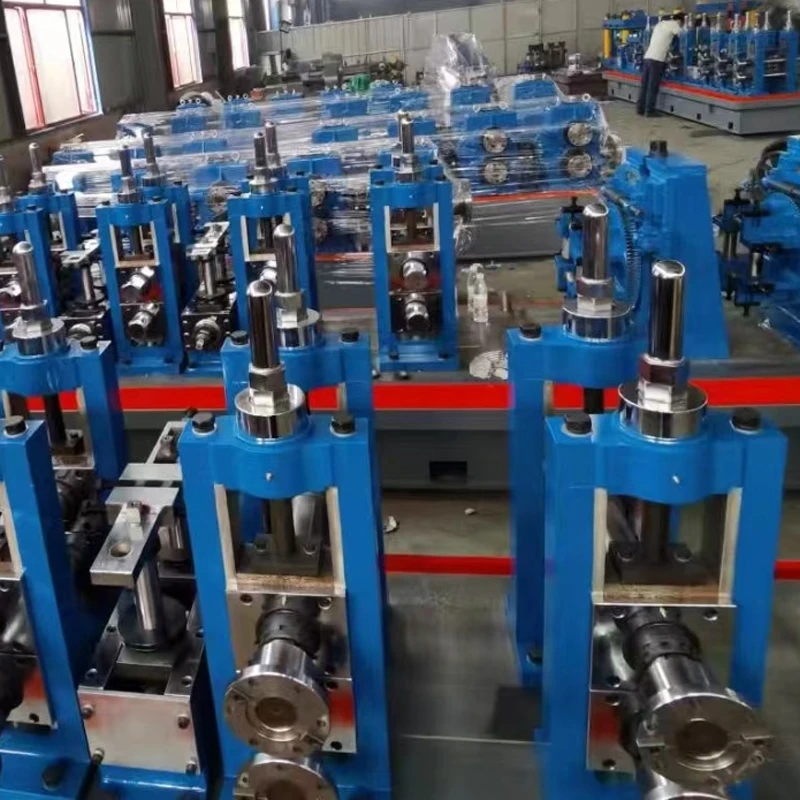six high rolling mill
Understanding Six High Rolling Mills A Comprehensive Overview
In the world of metal processing, rolling mills play a pivotal role in transforming raw materials into usable products. Among various types of rolling mills, the six high rolling mill stands out due to its unique design and increased efficiency, making it indispensable in industries that require precise thickness control and enhanced material properties. This article delves into the workings, advantages, and applications of the six high rolling mill.
What is a Six High Rolling Mill?
A six high rolling mill comprises six rolls arranged in two tiers, where one tier consists of two smaller rolls and the other contains four rolls
. The smaller rolls, known as the work rolls, are nestled between the larger rolls, termed as backup rolls. This configuration allows the mill to apply a greater amount of pressure on the material being processed, optimizing the reduction in thickness and enhancing the quality of the final product.The six high design is particularly beneficial because it minimizes the deflection of the work rolls, which can occur under heavy loads. In simpler configurations, such as two high or four high mills, the work rolls can bend due to the intense pressure exerted during the rolling process. However, the added support of backup rolls in a six high mill prevents such deflection, ensuring that the work rolls maintain their shape and deliver a consistent thickness across the rolled sheet or strip.
Advantages of Six High Rolling Mills
The six high rolling mill offers several advantages over its predecessors.
1. Improved Thickness Control One of the primary benefits is the superior control over the thickness of the finished product. The unique design allows for a more uniform roll gap, which is crucial for producing high-quality materials, particularly in applications requiring precise thickness tolerances.
six high rolling mill

2. Enhanced Material Properties The rolling process in a six high mill not only reduces thickness but also enhances the mechanical properties of the material. The way the steel or other metals are deformed during this process improves their strength and ductility, making them ideal for various applications.
3. Higher Efficiency Six high mills can process materials at higher speeds compared to traditional rolling mills. Due to their ability to exert significant pressure without deflection, these mills can achieve higher productivity levels, reducing the time needed for milling operations.
4. Reduced Roll Wear The design also limits wear on the work rolls, as the pressure is distributed more evenly across the rolls. This longevity translates to lower costs in maintenance and replacement, making six high mills a cost-effective choice for manufacturers.
Applications in Industry
Six high rolling mills are employed across various industries, primarily in the production of thin strips and foils. The automotive industry, for instance, utilizes these mills to create high-strength steel components essential for vehicle manufacturing. Similarly, the aerospace sector benefits from the production of lightweight but robust materials that can withstand extreme conditions.
Furthermore, the electronics industry relies on thin metallic foils produced by six high mills for circuit boards and other components. The ability to create ultra-thin and precisely controlled materials is critical for the advancement of technology and innovation in this field.
Conclusion
In summary, six high rolling mills represent a significant advancement in metal processing technology. Their ability to provide exceptional thickness control, improved material properties, and enhanced efficiency makes them a valuable asset in various industrial applications. As the demand for high-quality materials continues to rise, the six high rolling mill will undeniably play a crucial role in meeting these needs and pushing the boundaries of what is possible in metalworking. As industries evolve, so will the technologies surrounding rolling mills, ensuring that they remain at the forefront of manufacturing processes.
-
High Frequency Straight Seam Welded Pipe Production Line|BzZhou Xinghua|Precision Welding&EfficiencyNewsJul.30,2025
-
High Frequency Straight Seam Welded Pipe Production Line - BzZhou Xinghua|Precision Engineering&EfficiencyNewsJul.30,2025
-
High-Frequency Straight Seam Welded Pipe Production Line-BzZhou Xinghua Machinery Equipment Manufacturing Co., LTD.NewsJul.30,2025
-
High-Frequency Straight Seam Welded Pipe Production Line-BzZhou Xinghua Machinery Equipment Manufacturing Co., LTD.|Precision Manufacturing, High EfficiencyNewsJul.30,2025
-
High Frequency Straight Seam Welded Pipe Production Line-BzZhou Xinghua Machinery Equipment Manufacturing Co., LTD.|Precision Steel Pipe Manufacturing&Industrial EfficiencyNewsJul.29,2025
-
High-Frequency Straight Seam Welded Pipe Production Line-BzZhou Xinghua Machinery Equipment Manufacturing Co., LTD.|Precision Steel Pipe Manufacturing&Industrial EfficiencyNewsJul.29,2025


